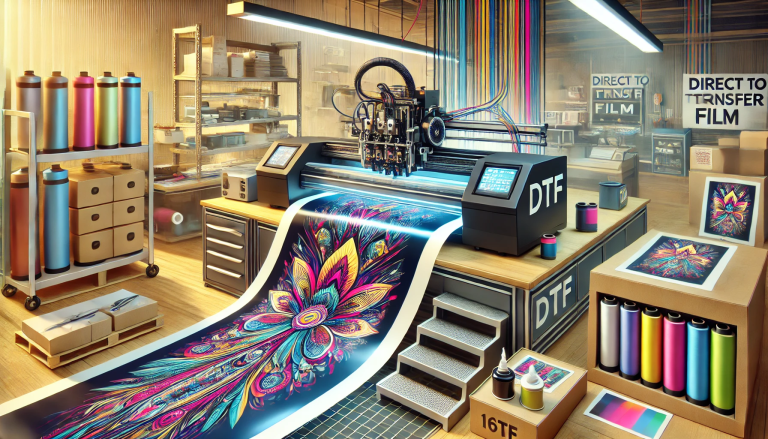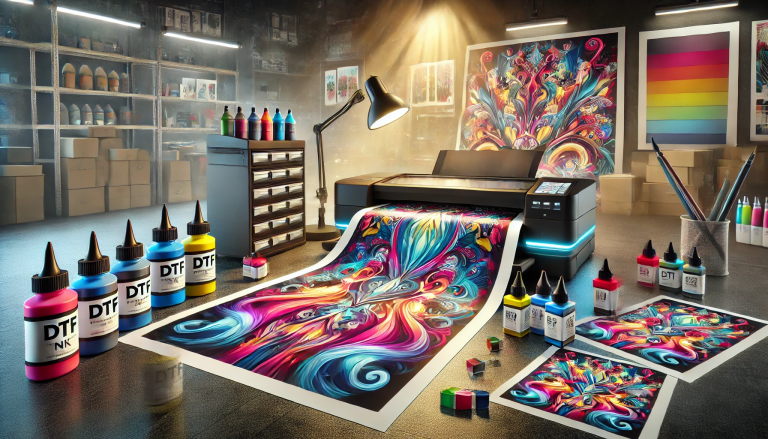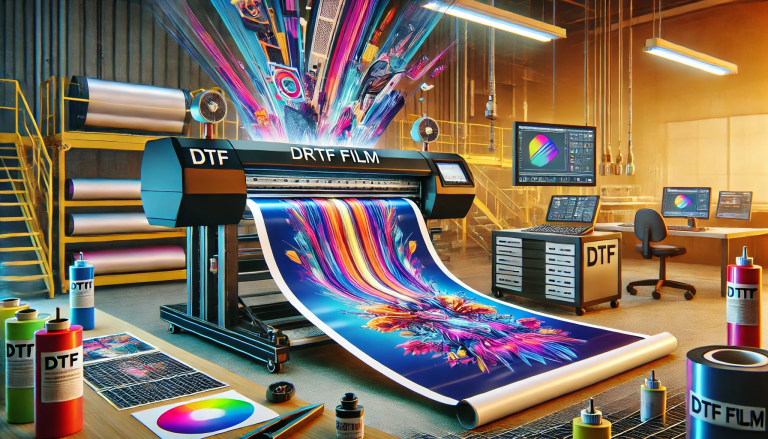“Demystifying Direct-to-Film (DTF) Transfer: A Comprehensive Overview” -MAXDTF- DTF Transfer Film Supplier, PET Film DTF A3 Manufacturer, Made in China
Summary:
This article provides an in-depth understanding of Direct-to-Film (DTF) transfer, an increasingly popular method in the textile printing industry. The article delves into what DTF transfer is, its printing process, the unique advantages it offers, a comparison with other popular printing methods, and its prospects in the textile industry.
Part 1: What is DTF Transfer?
Direct-to-Film, or DTF transfer, refers to a specific printing process used primarily in the textile industry. As the name implies, it involves printing a design directly onto a special film, followed by transferring this design onto the fabric with the aid of heat and adhesive powder.
Contrary to more traditional printing methods, which apply the design directly onto the material, DTF transfer leverages an intermediate stage (the film) to create a vibrant, durable, and flexible print.
Part 2: The DTF Printing Process
The DTF printing process is an innovative, multi-step procedure. The initial phase involves printing a desired design onto a film using specially formulated DTF ink. This is accomplished with the assistance of a DTF printer, capable of rendering high-resolution, colorful images.
Following the initial printing, an adhesive powder is liberally applied to the film, sticking to the ink. This powder serves as the binding agent between the printed design and the fabric in the transfer stage.
The prepared film is then positioned onto the fabric, and the heat press comes into play. This stage involves applying heat and pressure to the film, causing the adhesive powder to melt and bond the ink with the fabric. Once the process is completed, the film is peeled away, leaving a vibrant design on the fabric.
Part 3: Unique Advantages of DTF Transfer
DTF transfer comes with numerous unique advantages, making it increasingly popular in the textile industry. The quality of the print is typically high-resolution with excellent color fidelity, allowing for detailed, vibrant designs.
DTF is also versatile, capable of printing on a broad range of fabrics including cotton, polyester, and various blends. This stands in contrast to methods like sublimation printing, which is primarily effective on polyester fabrics.
Moreover, prints created via DTF transfer are flexible and durable. They can withstand numerous washes without significant fading or cracking, outperforming several other printing methods in terms of longevity.
Part 4: Comparing DTF Transfer with Other Popular Printing Methods
When contrasted with other popular printing methods, DTF transfer holds its own. Compared to direct-to-garment (DTG) printing, DTF offers greater versatility in terms of applicable fabrics and often delivers more durable prints.
Versus screen printing, DTF transfer provides more flexibility when it comes to complex, multicolor designs, as it doesn’t require separate screens for each color. However, for large-scale, single-color designs, screen printing may still be more cost-effective.
Against sublimation printing, DTF proves superior on natural fabrics like cotton and offers more vibrant colors due to the thicker layer of ink deposited.
Part 5: Future Prospects of DTF Transfer in the Textile Industry
The future of DTF transfer in the textile industry seems bright. As the demand for custom, high-quality printed garments continues to grow, so too does the potential for DTF transfer.
Emerging advancements in DTF printer technology, ink formulations, and adhesive powders promise improved print quality, durability, and eco-friendliness. Further research and development in these areas could see DTF transfer becoming the leading printing method in the textile industry.





